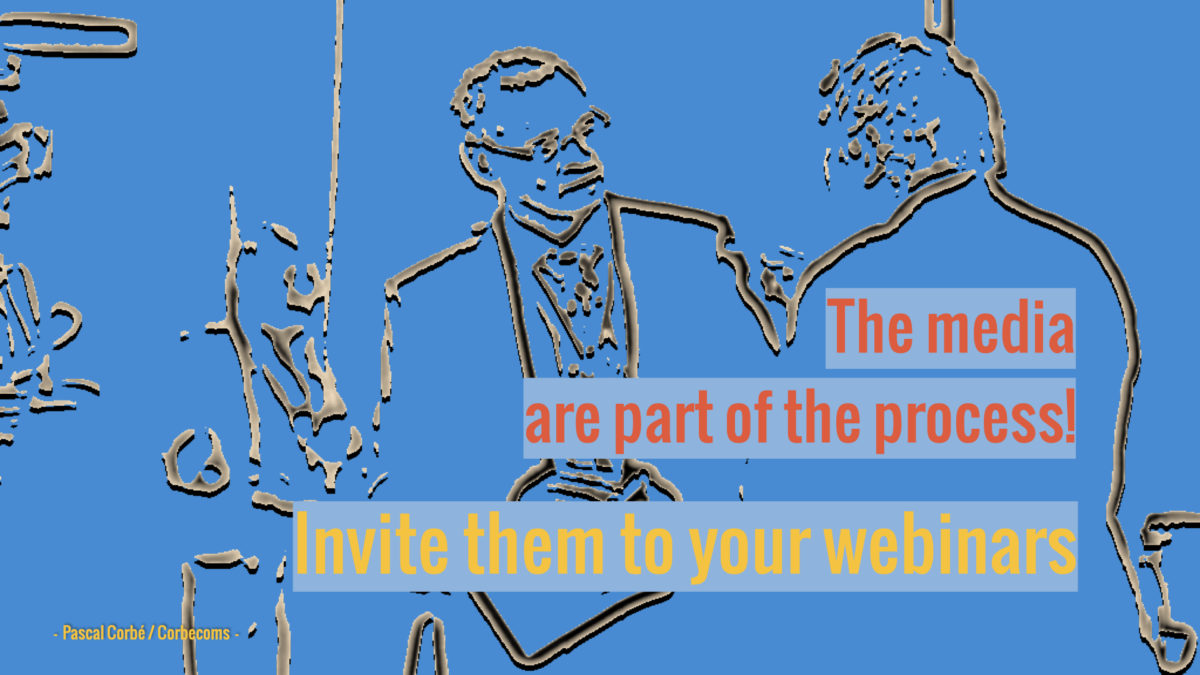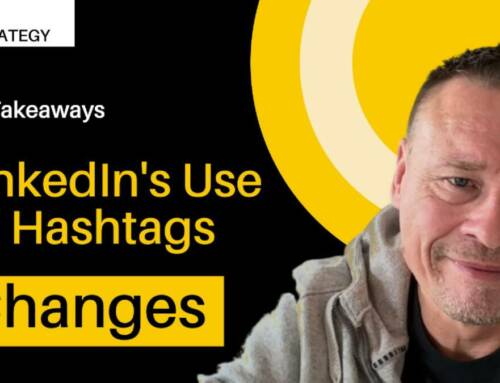Almost always the answer is “yes, you should!” At least always consider it.
Let’s have a look at when it’s an option and what the opportunities are.
Setting up a webinar for a larger audience — for an online project launch for example — is terra incognita for many people.
There’s a lot to think of. Many old hares who have seen hundreds of events coming and going, now get super nervous when it comes to shifting the action online. In short, extending an invite to the media is not on anyone’s wishlist. Maybe there’s even a bit of anxiousness at play. Is the webinar going to run into connectivity issues? We don’t want bad press.
Still, you should give it a good thought to invite the media.
Why? It’s simply a great opportunity. And when you have a great opportunity, you will make the best of it!
Just like you would for a conventional physical event, you want the media there to carry your messages out to the open. They are instrumental multipliers of your ideas and messages.
Encourage “your” journalists to participate. Adress them directly, ideally by using a slightly tweaked invite. Communicate to them that there’ll be an opportunity during the webinar to ask their specific questions.
You could have something like a mini-press conference section. Maybe after the end of the actual webinar, or in form of a breakaway session.
They can log in to only that part if they want. The media often don’t have time to sit through an entire event.
Set a specific time for it (stick to it!) and set out how you’ll handle the media and communicate all that to the journalists.
A special media contact is a good idea too if you have someone for that. If you don’t, you can still carve the same contact person out as the media contact. The media are just like everyone else. They want to feel special and pampered.
Even a photo opp in form of a screenshot session is a great idea. One just has to become creative. The journos will appreciate it.
Okay, it’s something to think of in more detail and will depend on the platform technology you’re using and maybe the external support you hire in. I suggest you consider it though.
Sure, there are webinars that are not intended for the public to log in or even to know about, but then there are those that are public or of great potential interest to your target group.
Don’t just reach out to your target group directly with your email invite. Let’s face it, you don’t have everyone on your email dissemination list. Nor can you reach everyone with your own social media outreach. And even if you could, most of them won’t join the webinar.
So invite the media. No, actually run after them. They have a great reach to your wider target groups, plus a different type of access.
Basically, a similar logic applies as to when you invited them to traditional events. The same kind of media outreach work, with the same kind of benefits.
And just like with the old-fashioned events, ideally you want them to attend. It’s not the same when they pick up the recording from social media platforms. Just like writing a story from a press release is not the same as if the media attended your event.
Remember: Beyond the added reach, you also want critical voices. They provide your initiative with credibility.
When you show that you even promote critique, your credibility grows even more.
Posting on your own social media accounts is simply not the same as having the media participating!





Leave A Comment